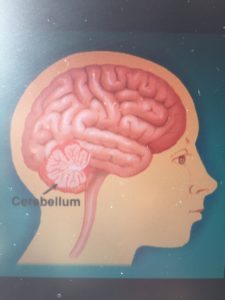 What’s the cerebellum, exactly? The cerebellum is a part of the brain connecting the brain stem to the cerebrum, and is involved in automatic muscle control and balance.
What’s the cerebellum, exactly? The cerebellum is a part of the brain connecting the brain stem to the cerebrum, and is involved in automatic muscle control and balance.
More than that, though, it is also important for speech. Speech relies on just such automatic muscle control, (think lips, jaw and tongue) so anything that impairs that function can be problematic. Add to that the flat affect and childlike behavior some with cerebellar disease or injury exhibit and you also have a picture of an ASD diagnosis.
New research has found a significant correlation between saccades (rapid eye movements) and deficits in the functioning of the cerebellum, which is now understood, in addition to the muscle control and balance, to play a significant role in both social and emotional development.
With normal brain development these saccades are consistent and quick. We are able to focus our eyes from far to near and back again, from one word to another on a page, from one spot on a computer screen to another, without difficulty. For someone on the autism spectrum, however, these rapid eye movements are less consistent. In addition, when presented with stimuli requiring that consistency, people diagnosed as being on the autism spectrum find it difficult to adapt to changes in those stimuli, which their non-ASD peers do not. This difficulty adapting to changing stimuli can provide clues for the Behavioral Optometrist in diagnosing a visual processing dysfunction.
We utilize tests for these eye movements during our evaluation. Be encouraged. Our priority is to provide the most thorough and comprehensive care possible; and to enable your child to reach his or her full potential.
